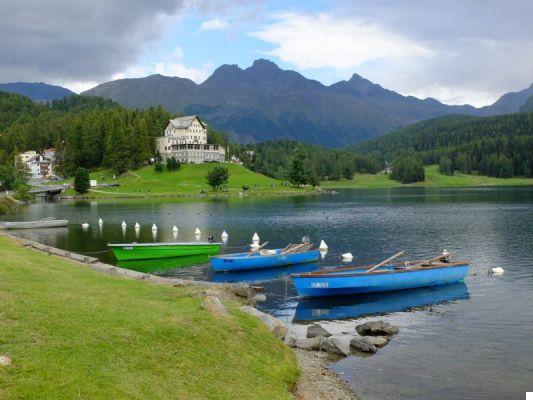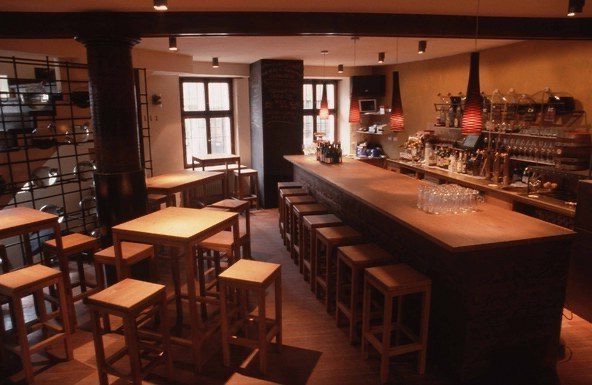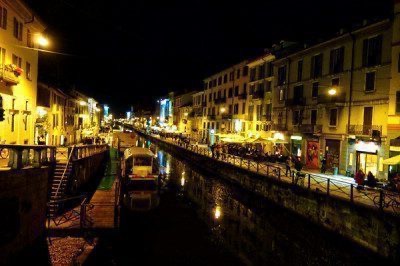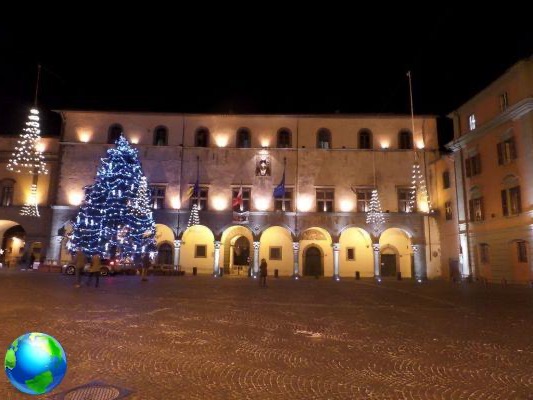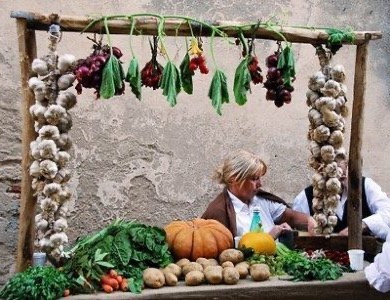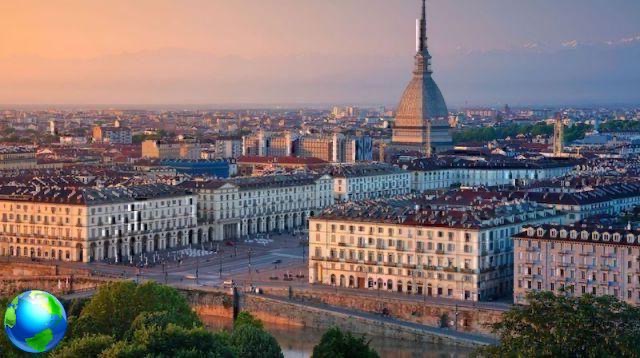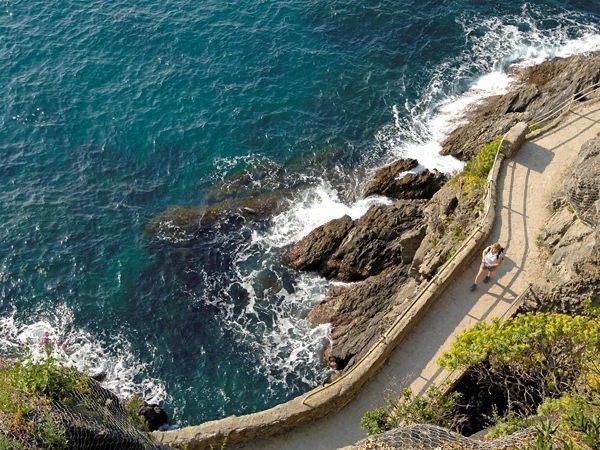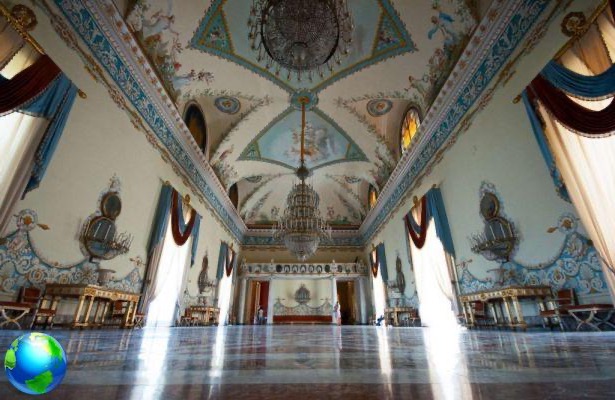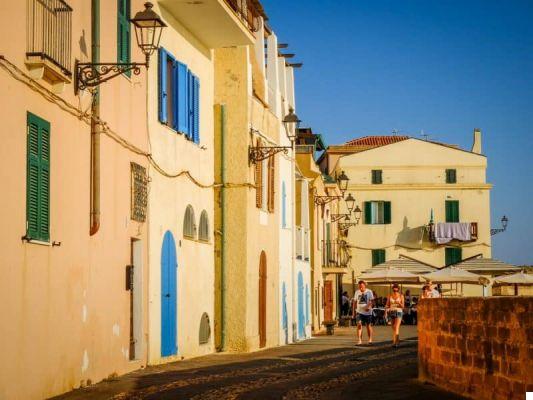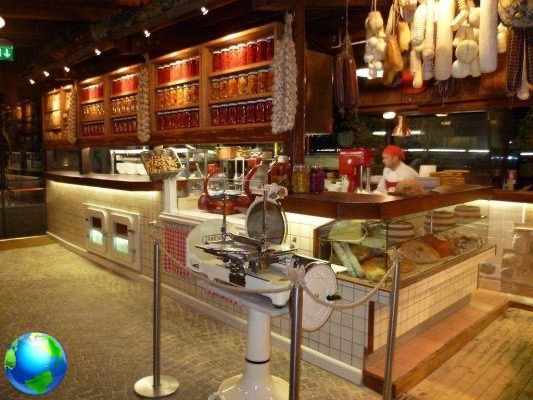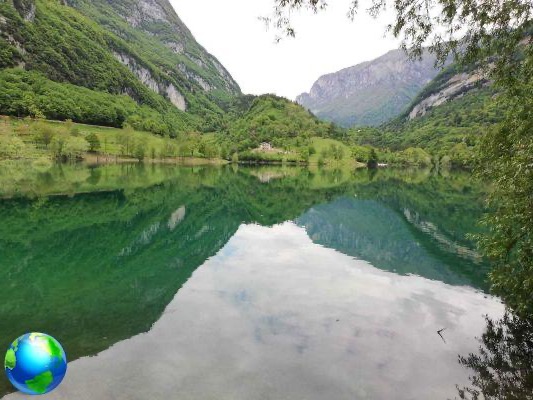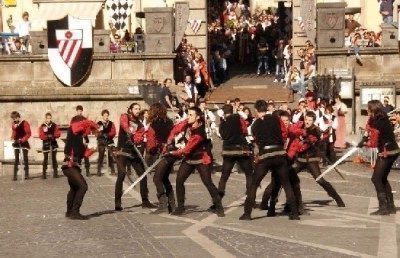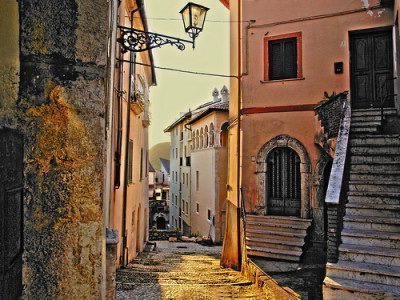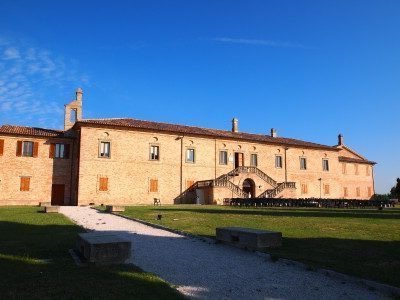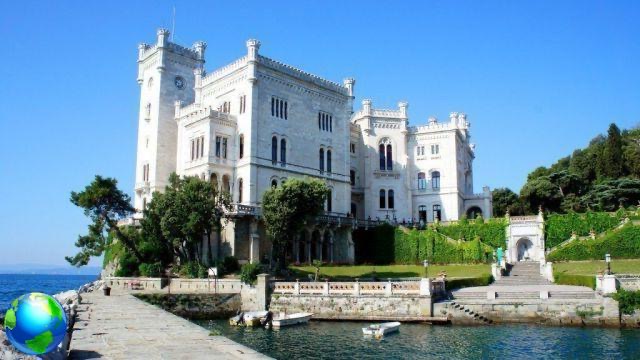Have you ever climbed a 2000-meter mountain by train? With the Bernina Express (the Bernina red train) you can and it is a unique experience!
I have lived in Milan for 14 years and for at least half I have wanted to take the Bernina Express, the famous red train that climbs the Alps to reach St. Moritz. I have always experienced it as a fairytale train, a train with a bright red livery that silently cuts through the clouds to reach frozen lakes and snow coverings, a slow train, from the past, in which you feel catapulted into a Wes film. Anderson.
The mythical trafficking he gives Tirano (Sondrio) arrives at St. Moritz it was inaugurated in 1910 and declared World Heritage Site by UNESCO in 2008. This railway line has always been considered a real flagship of XNUMXth century engineering (it was even copied by the Japanese!) and represents one of the most beautiful train journeys in the world to be done at least once in a lifetime. Could I then miss it?
During the 61 km journey you go from 429 meters above sea level in Tirano to 2253 meters at the Ospizio Bernina station (hence the name of the red train), which divides the Val Poschaivo from the Engadine, and is a unique succession of incredible natural landscapes: green meadows, woods, lakes, villages and perennial glaciers.
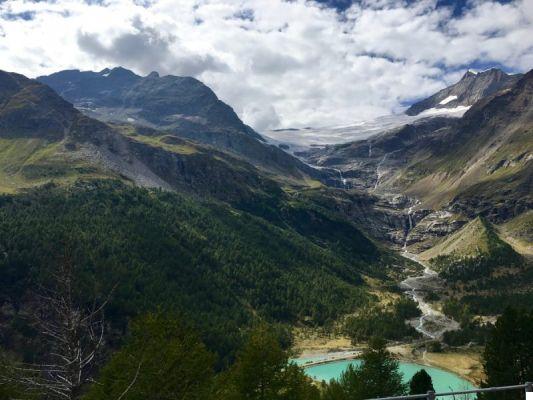
The red train route (15 stations in 2 and a half hours)
In 2 and a half hours the red train stops in 15 stations (8 only on request) climbing hairpin bends that I did not think technically possible for a train, as happens shortly after departure when the train passes on the spectacular circular viaduct of Brusio. The journey then continues up to Poschiavo crossing tunnels, bridges and curves suspended in the void to get to Alp Grüm (if you go down, take a trip to the panoramic terrace overlooking Lake Poschiavo). The next stop is theBernina Hospice with the magical vision of the two lakes, the White Lake and Black Lake, where the watershed between the Po basin and the Reno basin takes place. This is one of the most scenic points of the entire Bernina Express journey, when you pass under his majesty Pizzo Bernina: the summit does not often allow itself to be seen but if you are one of the lucky ones you will not forget it easily. The two stops following that of Ospizio Bernina are mainly used by those who want to enjoy the landscape even better by going up with the cable car to the top of the mountains: from the Bernina Lagalb stop you can take the Lagalb cable car that leads to the top of the same name, while from Bernina Diavolezza you take the cable car to the Forcella del Diavolezza. Both lead to the presence of the Bernina group and are one of the most panoramic points in the whole area. If you have time and desire to walk, it is also worth getting off at the next station, that of Morteratsch, and walk to the base of the glacier of the same name (it takes about an hour). From this point onwards the descent towards the Engadine begins, you cross the Val Roseg (where you can do the rides aboard horse-drawn carriages and in winter on snow sledges) to finally reach St. Moritz.
I am already planning to go back in the winter and you?
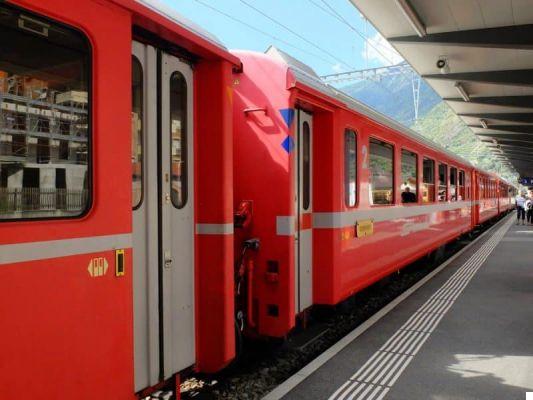
When to go on the Bernina Express? Better Summer, Winter, Autumn or Spring?
The Bernina Express runs every day, 365 days a year. I doubt it can be argued that a given season is better than another, each season has its colors and its light that make the red train route unforgettable. In summer the meadows are blindingly green, the water of the lakes is transparent and the snow is visible only on Palù, Bernina and Morterasch which have perennial glaciers.
In winter the landscape changes completely, with snow covering everything: trees, lakes and villages become white and soft. To be able to travel even in the middle of winter, since 1910 the Bernina Express has been equipped with a “snowplow”, a very special turbine device that is attached to the locomotive and allows you to clean the entire route… isn't it incredible? Even the intermediate seasons are not far behind, with the color of the leaves that changes and the landscape is tinged with yellow, red and green.
How to organize the Bernina Express (from Milan): times and costs
Depending on the time available and the budget, you can decide to do this trip in one day or in several days.
If you decide to do it during the day, the most comfortable and convenient thing to do is to rely on a specialized agency by buying a package online. I have used Civitatis and I found myself very well. We leave Milan by bus in the morning at 7, we visit Tirano and after lunch we board the Bernina Express. Upon arrival in St. Moritz there is some free time to tour the town, then get back on the bus and return to Milan around h20-21. By doing it this way you can't get off the red train, you just see everything from the windows. The cost of this excursion (which includes transport, insurance and guide) was 88 euros per person and the organization was impeccable.
It is a nice trip even so, you can see very well from the windows and the Bernina Express goes slow enough for you to take some good pictures.
Another (equally valid) alternative is to buy a package from Get Your Guide site (which I use often and with which I have always found myself well). Find some packages in the box below, but there are others on the site as well. Through them you can also buy only the return train ticket.
If you have a little more time, instead, it is better to sleep in Tirano (which is a nice town with several things to see) and take one of the first Bernina Express in the morning, making several intermediate stops, for example in Poschiavo, Ospizio Bernina and Morterasch to see the glacier and do some small treks.
Between Tirano and St. Moritz there are about 15 regional and express trains a day and the first one leaves at 7.
Taking the trip in this way you can then always return to Tirano by train (the last ride leaves St. Moritz at 19:50). Tickets can be purchased online on the Rhaetian Railway website. Often there are also special offers o special packages (e.g. trip with lunch included, etc.).
Calculate that a Tirano-St. Moritz return trip in 2nd class on the Bernina Express (booking seats) costs 90 Swiss francs (which is equivalent to approximately 80 euros). If you decide to do it in two days, a good option can be to buy the UNESCO Heritage Pass. This pass is valid for 2 days and allows unlimited train journeys along the entire route (including Thusis-Tirano) at a cost of 72 francs (65 euros).
In summer, open carriages are added to the convoy.
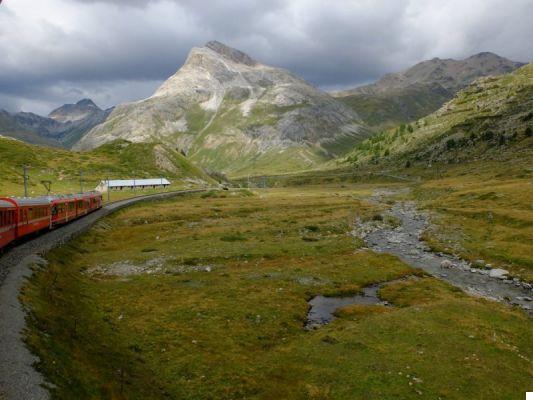
What to see in Tirano (the departure station)
Tirano is a quiet town nestled between the Alps: the Orobie Valtellinesi to the south, the Bernina massif to the north and the Stelvio massif to the north-east. The town develops around two main nuclei: the ancient village on the left bank of the Adda and the area of Madonna di Tirano which, after the construction of the sanctuary in the first half of the sixteenth century, has become an important religious pilgrimage destination.
Start your visit of the city from Sanctuary of the Madonna di Tirano; this renaissance sanctuary was erected after the apparition of the Madonna in 1504 and is truly beautiful. To see the Romanesque bell tower, the baroque stuccos and sculptures and the seventeenth-century organ (fully functional!) With its 2000 pipes, rich in carvings and high-reliefs.
From here, take Viale Italia to get to the ancient village, made up of beautiful buildings from the sixteenth and seventeenth centuries, houses with wooden balconies and small squares that open up into the alleys. Not to be missed: 1) the Lambertenghi Gold House Museum, a 2th-XNUMXth century house that still has the precious original furnishings and an art collection belonging to the family that still lives in the house; if you decide to sleep in Tirano you can sleep in the beautiful adjoining b & b; XNUMX) Porta Poschiavina and Palazzo Pretorio, the best preserved gate within the walls that Ludovico il Moro had erected to defend the city and the adjacent Palazzo Pretorio; 3) Marinoni Palace: now the seat of the town hall, it was a convent of the Augustinians in the seventeenth century; 4) Palazzo Salis, a beautiful XNUMXth century palace with a XNUMXth century facade, two towers and a Baroque portal designed by Vignola (the beautiful Italian garden can also be visited on request).
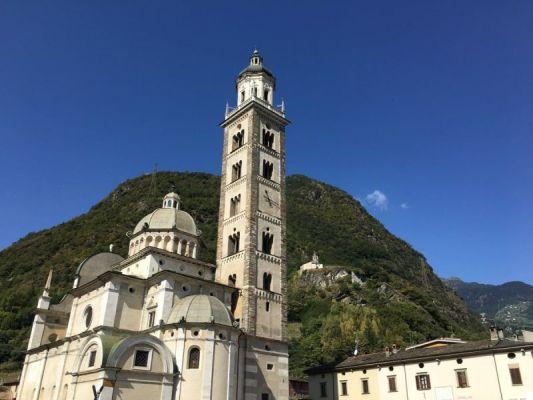
Where to sleep in Tirano or Pontresina
- B&B Palazzo Lambertenghi (Tirano). This b & b is located in one of the most beautiful buildings in the historic center of Tirano. All the rooms of this charming residence are ancient and completely renovated, the furnishings are period and there is particular attention to every detail, from the linen, to the porcelain for breakfast, etc. A welcome from the past for a very charming location.
- Hotel Ospizio Bernina (Pontresina). If you decide to sleep along the way, the Bernina Hospice is the one for you. This ancient hospice is 500 meters from the train stop of the same name and has been active for more than 130 years! It is open all year round but in winter you have to arm yourself with boots and snow clothing to reach it on foot.
Where to eat in Tirano
- La Vineria (Tyrant). Enoteca but also restaurant in the historic center of the town. All products are locally sourced and come from the family farm. Historic restaurant.
- Osteria Roncaiola (Roncaiola). This osteria is perfect for tasting the typical dishes of Valtellina cuisine such as pizzoccheri, sciatt, and various game dishes from a beautiful glass veranda suspended over the vineyards with a view across the valley.
- Orterie (Stazzona). In this elegant restaurant a few kilometers from Tirano, also equipped with an outdoor garden, the chefs Rie and Francesco offer high-level cuisine with vegetarian and vegan dishes (for tourists or "pure" Valtellinesi it is also possible to choose a local menu with pizzoccheri and sciat). Both Rie and Francesco boast a very high level working past with starred chefs like Cannavacciuolo or Leeman (del Joia in Milan). An experience to do!
